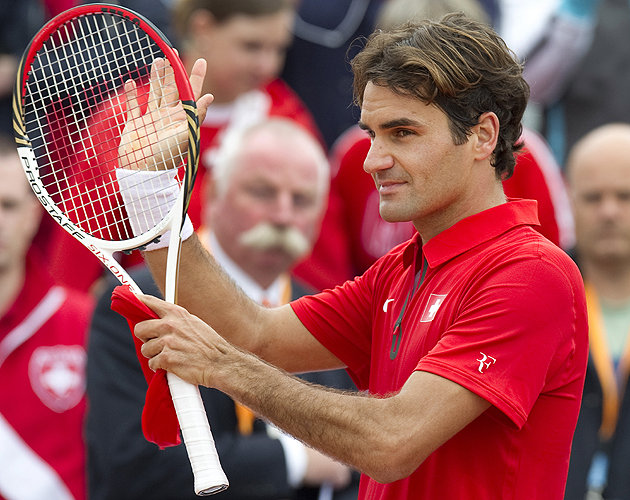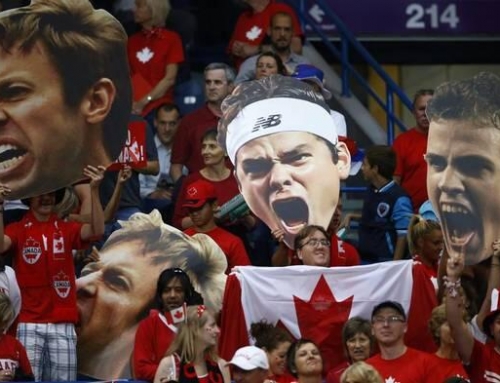 In the US, there’s this thing called the BCS. It stands for the Bowl Championship Series. It’s a solution to a problem: how do colleges award a American football champion? There are so many teams that play college football, and football is such a violent sport, that there’s no way for a reasonable number of teams to face each other.
In the US, there’s this thing called the BCS. It stands for the Bowl Championship Series. It’s a solution to a problem: how do colleges award a American football champion? There are so many teams that play college football, and football is such a violent sport, that there’s no way for a reasonable number of teams to face each other.
Let’s briefly talk American college football for those who don’t know it. First, college teams are divided by divisions. Division 1 are the elite, usually colleges that have a lot of students. There’s Division 2 and Division 3 with the quality and talent less at each stage. Within Division 1, teams usually belong to a conference, which can be between 8 and sometimes 14 or so teams. Of the many conferences, there are a few power conferences: the Big Ten, the Big 12, the Pac-10, the SEC to name some. These conferences were location-specific, thus, the Pac-10 had teams from the West Coast. This was supposed to make travel easier, especially in the days before big money and inexpensive flights.
American sports love a “regular” season and a post-season. So a typical college football team plays about 10-12 games, and based on their record, they get invited to a “bowl”. A bowl is basically people who run the bowl that invite two teams to play. Among the top bowls are: the Sugar, the Orange, the Fiesta, and the Rose Bowl. Some bowls, most notably, the Rose Bowl used to invite the champion from the Big Ten and the winner from the Pac Ten to play each other.
The problem? It was very possible, due to these affiliations, that a #1 team would not play a #2 team.
The BCS was created to rectify this. Teams were evaluated using a computer algorithm which combined several rankings (coaches rank and sportwriters rank plus a few computer rankings), plus strength of schedule (how strong were a team’s opponents) with the purpose of identifying two teams to play in a national championship.
Despite solving the problem of “how can we get #1 to play #2”, critics despised the system. What if there was an undefeated team, and three 1-loss teams? Which one-loss team would get picked? What if an undefeated team was weak? What if there were three undefeated teams? Which two would play?
Commentators would then argue the need for a playoff system with 4, preferably 8 teams, playing. College presidents would routinely refuse.
This argument was trotted year after year (and still is). If you don’t have an idea for an article you need to write, then complain about the BCS.
So what does this have to do with tennis?
It turns out that there are tennis writers that complain about the same things every year. It usually boils down to two topics: the Davis Cup, and the tennis season after the US Open. Invariably, American writers who write on tennis but can’t quite seem to love it as much as they love, say, football (pro or college), always feel tournaments should be shut down after the US Open. After all, everyone else is watching football, so why bother having tennis. They see the US Open as a kind of post-season even though tennis isn’t structured that way.
In particular, tennis is built around Slams. After that, it’s hard to say what’s most important. The year-end championship is just not at the same level. Eight players play this, and many are happy to be there. Mardy Fish, despite being injured, was thrilled to be in the final 8 last year. He felt it was quite an accomplishment. Federer has racked up a bunch of these titles mostly because he plays so well indoors. Nadal is still seeking his first title, and hasn’t placed a premium on it.
The matches weren’t even covered on mainstream TV or even ESPN. Now, it appears on Tennis Channel.
That’s the closest thing to a post-season.
After the US Open, there’s usually two sets of tournaments: there are the Asian tournaments and there are the European indoor tournaments. The Asian tournaments usually involve Bangkok and Kuala Lumpur, then Beijing and Tokyo (ATP 500s), then Shanghai (Masters 1000). Then it heads to Europe with St. Petersburg and a few others, then Basel and Valencia (ATP 500s), then Paris, then the year-end championships.
Tennis Channel, to its credit, televises most of this though its affiliation with European/British TV. They just rebroadcast it using their commentary, which is pretty good.
The real problem with getting rid of these tournaments is many countries like to host an event. China is getting better at tennis, and they certainly have money where they lack in talent. These places would be upset if these tournaments disappeared. The suggestion of getting rid of these tournaments would be equivalent to telling baseball that they should play 80 games a year or basketball they should play 40 games. People would scream and yell, even if the final product would be better.
The other issue is Davis Cup. There’s no doubt about it. It’s hard to play Davis Cup if you’re a top player. Davis Cup ties are almost always played the week after a Slam. If you’ve done well in a Slam, you may have to switch surfaces and play in some arena in the middle of nowhere just to make progress. Again, commentators feel like the only people worth watching are the champs. This past weekend Amir Weintraub defeated two Japanese players to help Israel overcome a tougher Japanese team. Israel is as thrilled by these victories as anyone, despite knowing they can’t win the main level championship.
Last night, Hoosiers was being televised. It’s the story of a small-town Indiana high school team that beats a much bigger city team. Getting rid of these lower level events is like getting rid of small teams throughout high school basketball and football. For some, a small victory is huge. For commentators where only the top 5 players matter, it’s unimportant.
So while Americans are busy watching pro or college football, getting ready for the baseball postseason, realize that there’s still tennis after the US Open, and without it…
Without it, Roger Federer would never have regained number 1.





![[US Open Men’s Final] Can Djokovic beat Nadal in the finals?](https://www.essentialtennis.com/wp-content/uploads/2013/09/20130909djokovic-500x383.jpg)

